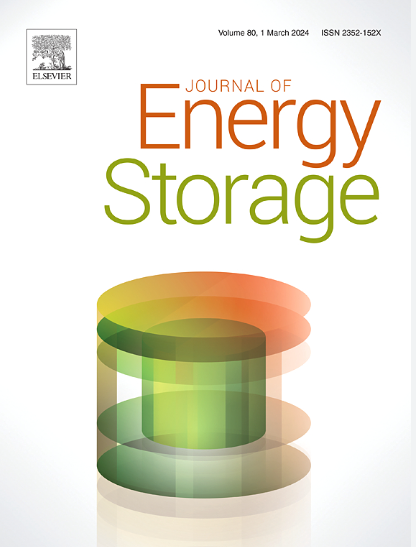Tuning Zn ion diffusion and desolvation via zincophilic carbonyl-rich interphase towards highly reversible and dendrite-free zinc anodes
IF 8.9
2区 工程技术
Q1 ENERGY & FUELS
引用次数: 0
Abstract
Serious dendrite formation and sluggish dynamics at Zn anode hinder the commercialization of aqueous zinc-ion batteries (AZIBs). Here, a zincophilic and carbonyl-rich zinc citrate interphase was in-situ constructed on Zn anode surface (Zn@CZ) to overcome the above-mentioned challenges. Finding confirms that the introduced zinc citrate layer could effectively homogenize the interfacial electric field distribution and favor Zn2+ transport at the anode due to the reduced nucleation barrier. Moreover, the functional oxygen-containing groups on Zn@CZ electrode accelerate the Zn2+ desolvation process and isolate the electrolytes, which further restrains the water-related parasitic reactions. As a result, the Zn@CZ anode exhibits an ultralong cycle lifespan of 6270 h at 1 mA cm−2/0.5 mAh cm−2, and maintains long-term stability for 4320 h at 5 mA cm−2/2 mAh cm−2 with a high cumulative plated capacity (10.8 Ah cm−2). The Zn@CZ//MnO2 full cells also achieve an excellent retention rate of 88.2% after 1100 cycles. The work brings forward a facile and industry-compatible approach towards dendrite-free and high reversible AZIBs.

通过亲锌富羰基间相调节锌离子向高度可逆和无枝晶锌阳极扩散和脱溶
锌阳极严重的枝晶形成和缓慢的动力学阻碍了水锌离子电池的商业化。本文在锌阳极表面(Zn@CZ)原位构建了亲锌富羰基柠檬酸锌界面相,以克服上述挑战。研究结果证实,引入柠檬酸锌层可以有效地均匀界面电场分布,并且由于降低了成核势垒,有利于Zn2+在阳极的输运。此外,Zn@CZ电极上的含氧官能团加速了Zn2+的脱溶过程,隔离了电解质,进一步抑制了与水有关的寄生反应。结果,Zn@CZ阳极在1ma cm - 2/0.5 mAh cm - 2时的超长循环寿命为6270小时,在5ma cm - 2/2 mAh cm - 2时保持4320小时的长期稳定性,具有较高的累积镀容量(10.8 Ah cm - 2)。Zn@CZ//MnO2充满电池在1100次循环后也达到了88.2%的优异保留率。这项工作为无枝晶和高可逆azib提供了一种简单且工业兼容的方法。
本文章由计算机程序翻译,如有差异,请以英文原文为准。
求助全文
约1分钟内获得全文
求助全文
来源期刊

Journal of energy storage
Energy-Renewable Energy, Sustainability and the Environment
CiteScore
11.80
自引率
24.50%
发文量
2262
审稿时长
69 days
期刊介绍:
Journal of energy storage focusses on all aspects of energy storage, in particular systems integration, electric grid integration, modelling and analysis, novel energy storage technologies, sizing and management strategies, business models for operation of storage systems and energy storage developments worldwide.
 求助内容:
求助内容: 应助结果提醒方式:
应助结果提醒方式:


